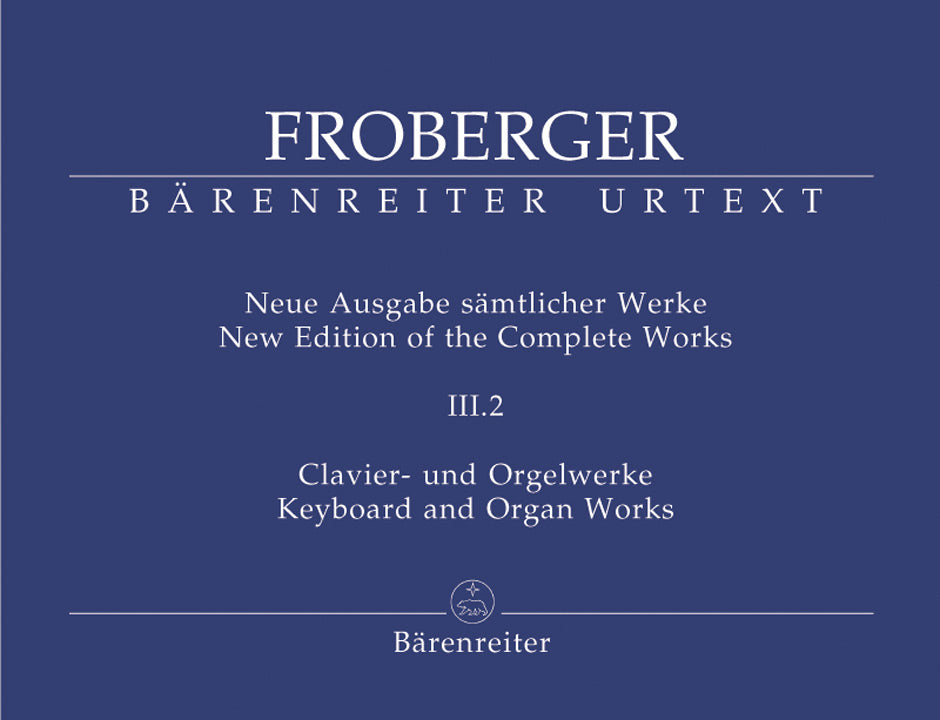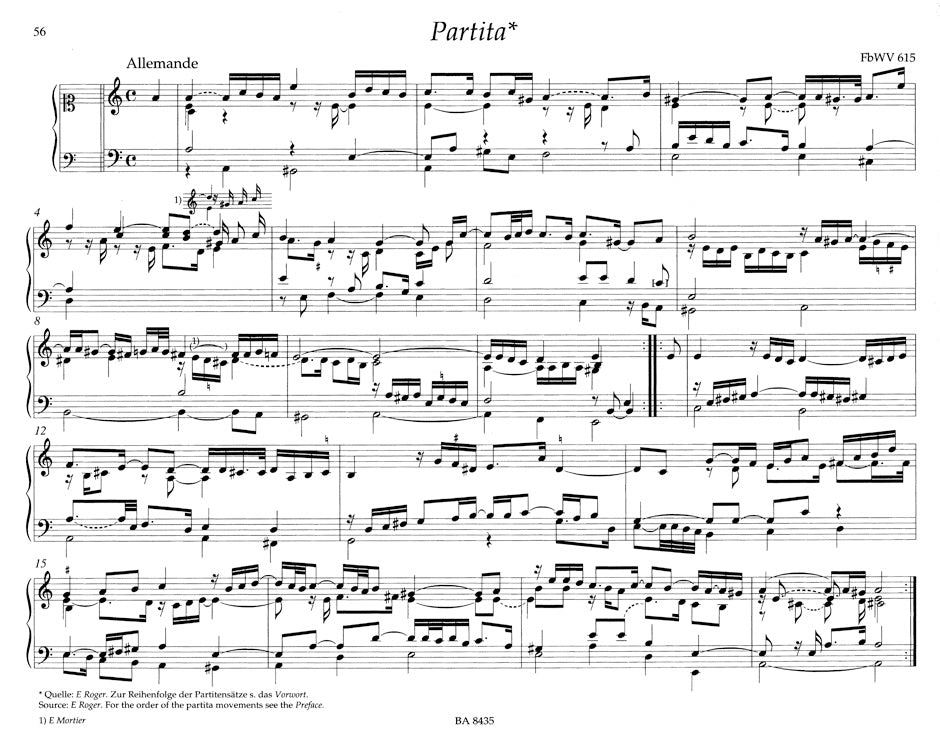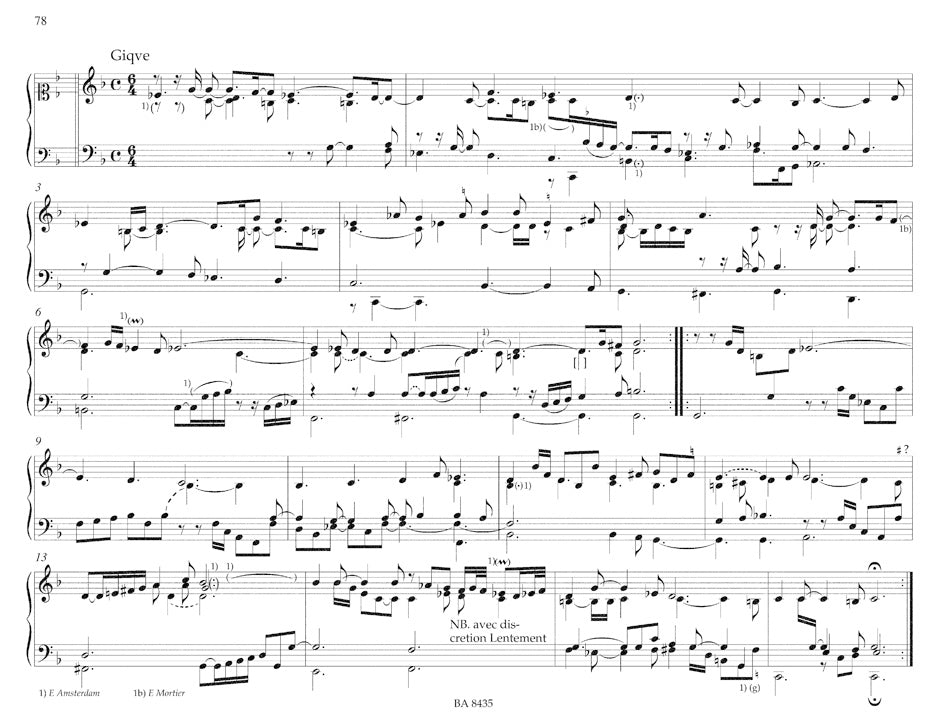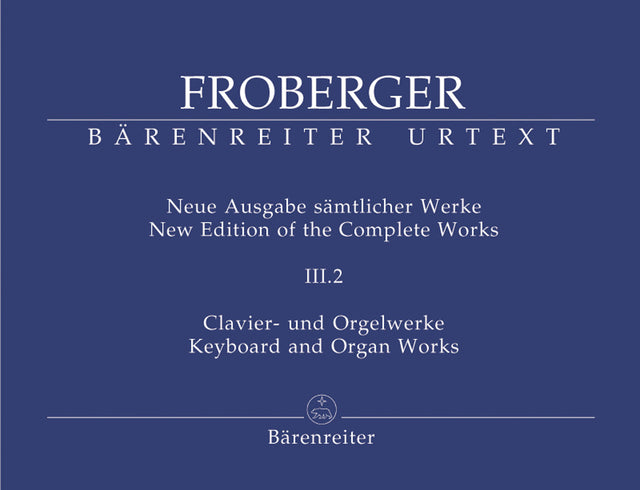Froberger: Works from Copied Sources - Partitas and Partita Movements, Part 1b
Keyboard and Organ Works - Volume 3, Part 2
Expected to ship in about a week.
- Composer: Johann Jakob Froberger (1616-1667)
- Editor: Siegbert Rampe
- Instrumentation: Organ, Keyboard
- ISMN:
- Size: 12.0 x 9.4 inches
- Pages: 138
- Urtext / Critical Edition
Description
Johann Jacob Froberger (1617–67) enjoyed an outstanding reputation during his lifetime, as his compositional style represented a synthesis of Italian, French and English influences. There is now a growing awareness that Froberger's significance for keyboard music of the 17th century is comparable only with that of Jan Pieterszoon Sweelinck.
Each volume contains a critical commentary as well as a detailed foreword with sections on the scope and structure of the new edition, the editorial method and performance practice. Information on contemporary instruments, ornamentation and Froberger's biography is also included.
Works:
- Partita in A Minor (Suite No. 15), FbWV 615
- Partita in A Minor, FbWV 615a
- Partita in G Major (Suite No. 16), FbWV 616
- Partita in F Major (Suite No. 17), FbWV 617
- Partita in G Minor (Suite No. 18), FbWV 618
- Partita in C Minor (Suite No. 19), FbWV 619
- Partita in D Major (Suite No. 20), FbWV 620
- Partita in F Major (Suite No. 21), FbWV 621
- Partita in E Minor (Suite No. 22), FbWV 622
- Partita in E Minor (Suite No. 23), FbWV 623
- Partita in E Minor, FbWV 623a
- Saraband in E Minor, FbWV 623b
- Chique in E Minor, FbWV 623c
- Partita in D Major (Suite No. 24), FbWV 624
- Partita in A Minor, FbWV 624a
- Partita in D Minor (Suite No. 25), FbWV 625
- Partita in D Minor, FbWV 625a
Publishers use a lot of words to describe what they sell, and we know it can be confusing. We've tried to be as clear as possible to make sure you get exactly what you are looking for. Below are descriptions of the terms that we use to describe the various formats that music often comes in.
Choral Score
A score for vocalists that only contains the vocal lines. The instrumental parts are not there for reference. Generally, cheaper than a vocal score and requires multiple copies for purchase.
Facsimile
Reproductions of the original hand-written scores from the composer.
Full Score
For ensemble music, this indicates that the edition contains all parts on a single system (there are not separate parts for each player). In larger ensembles, this is for the conductor.
Hardcover
Hardbound. Generally either linen-covered or half-leather.
Orchestral Parts
Similar to a wind set, this is a collection of parts. In the case of strings, the numbers listed are the number of copies included, though generally these are available individually (often with minimum quantities required).
Paperback
When publishers offer multiple bindings (e.g. hardcover) or study scores, this is the "standard" version. If you're planning to play the music, this is probably what you want.
Performance / Playing Score
A score of the music containing all parts on one system, intended for players to share. There are not separate parts for each player.
Set of Parts
For ensemble music, this indicates that there are separate individual parts for each player.
Solo Part with Piano Reduction
For solo pieces with orchestra, this is a version that contains a piano reduction of the orchestra parts. For piano pieces, two copies are typically needed for performance.
Study Score
A small (think choral size) copy of the complete score meant for studying, and not playing. They make great add-ons when learning concertos and small chamber works.
Vocal Score
A score prepared for vocalists that includes the piano/organ part or a reduction of the instrumental parts.
Wind Set
For orchestral music, this is a collection of wind and percussion parts. The specific quantities of each instrument are notated.
With Audio
In addition to the printed music, the edition contains recordings of the pieces. This may be an included CD, or access to files on the internet.
With / Without Fingering (Markings)
Some publishers prepare two copies - a pure Urtext edition that includes no fingering (or bowing) suggestions and a lightly edited version that includes a minimal number of editorial markings.





